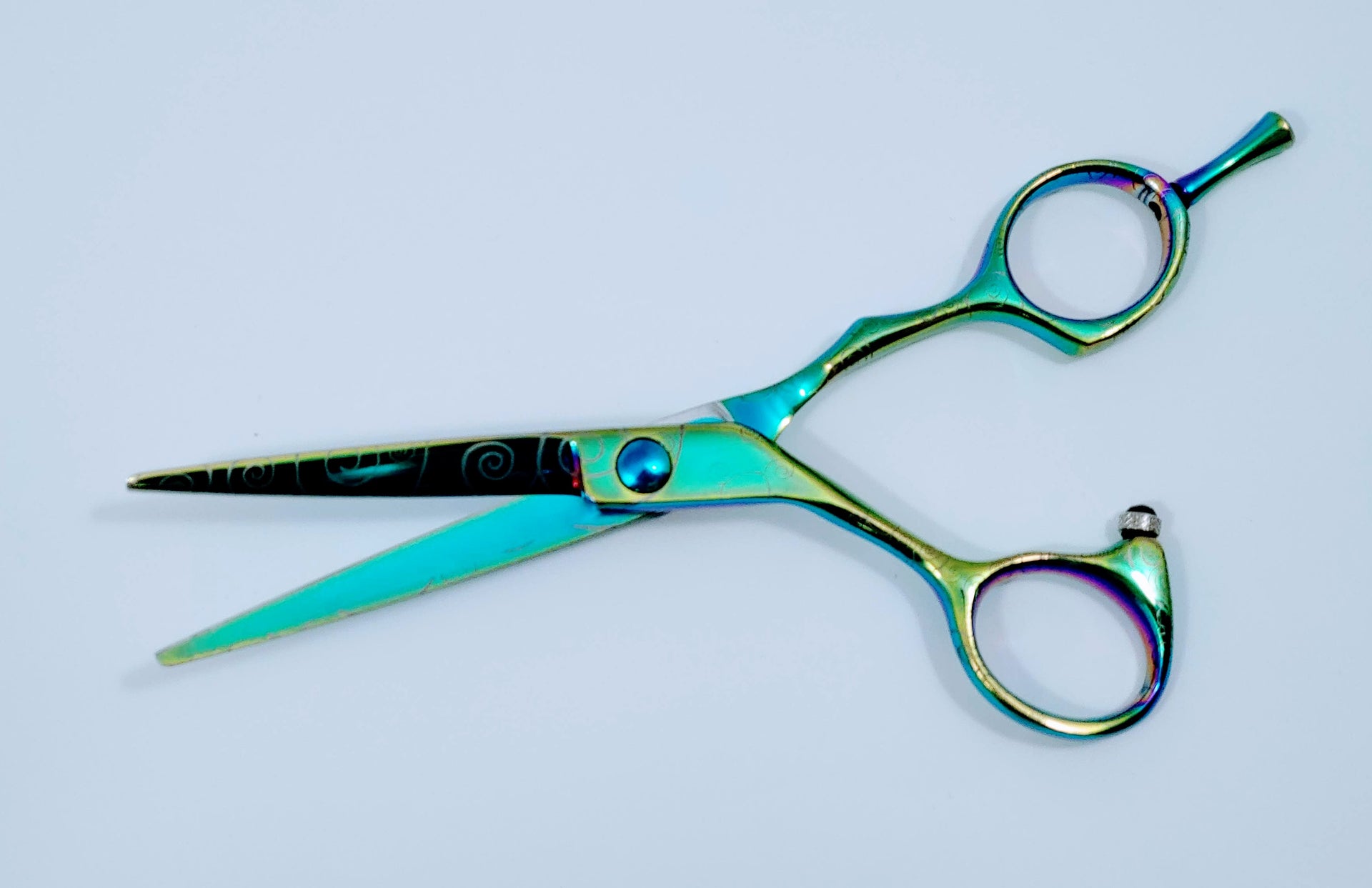
How to Sharpen Color Coated and Rainbow Colored Shears
Sharpening Titanium PVD Coated Shears
The PVD coated shears such as the Bonika Poison Ivy shears have become some of the most popular shears on the market. Recent advances in scissor making has given us the beautiful rainbow colors baked into the metal. Unlike the painted shears of the past where the coating flaked off over years of use, these titanium coating stay on, at least until it’s sharpened off.
It is important to understand that the outer coating is harder than the stainless steel underneath. In fact, the stainless steel under the titanium coating is usually much softer than an identical shear. The hardening process for the titanium affects the underlying metal. Therefore, it may take a little more aggressive abrasive to remove the titanium to get to the steel while the steel underneath may remove quickly. Here are some suggestions on sharpening these types of shears that we have discovered through trial and error.
Sharpeners and Stylist wonder how to sharpen the color coated shears.
Step 1: Work the rideline. An incomplete or missing rideline seems to be the number one problem in adequate sharpening that I have found. After taking the shears apart, work the rideline on your stone of choice. 2000 – 4000 grit preferred of a good Japanese stone. Remove enough of the color to form a complete rideline. Inspect the rideline carefully for this is the foundation for all the other sharpening. The ride must be a distinct silver color down the entire edge and over the half moon surface. Coloring the ride with a red Sharpie first will make this step easier.
Step 2: Create a bur with a light touch and an abrasive that is strong but fine. Use a scratch test to discover the angle. Typeically these shears are sharpened between 35 to 45 degrees. I like to use a silicon carbide 40 micron or a 800 grit for this process on the flathone. A diamond wheel would also accomplish this as well. It is important to note that even though these shears may look like a convex edge and even be advertised as having a convex edge, in reality they are beveled. The bevel might be slight, but it is there. You will need to sharpen them as a bevel. The bevel edge will become more noticeable with subsequent sharpenings but this is unavoidable. If you decide to sharpen these shears as a convex edge you will end up removing even more of the pretty color coating and often the edge will not hold as well because of the softness of the metal.
Step 3: Continue the sharpening using finer abrasives. Remember to use a light touch because the steel may remove quickly. Do not polish. You want to leave a little “bire” Remove the bur in your usually method and test the shears. I have found that if the shears do not cut correctly after the sharpening, the problem is invariably a problem with the rideline. This is why step 1 is so crucial.
When you sell these type shears or when you sharpen them, let the customer know that a small amount of the titanium coating will be removed during each sharpening and the appearance will change over time. It is much better to explain this before sharpening than afterwards.
